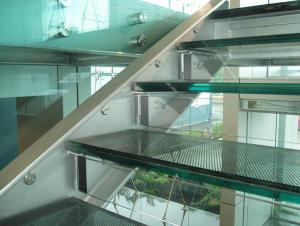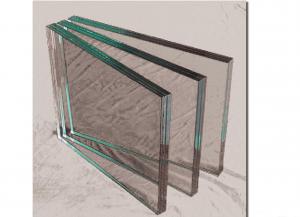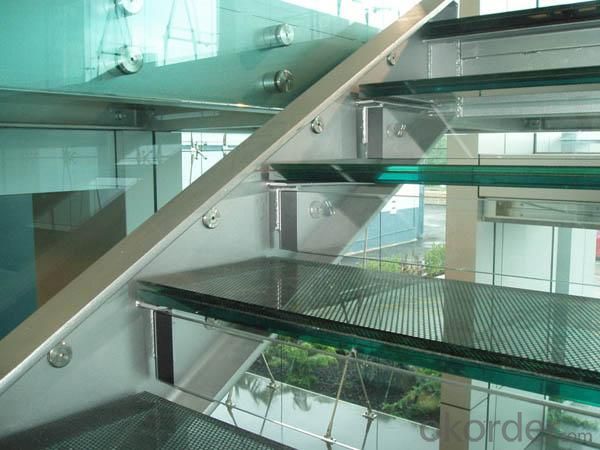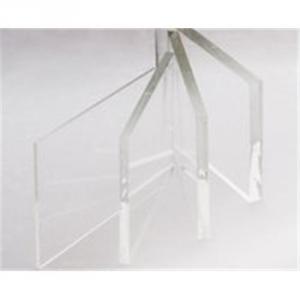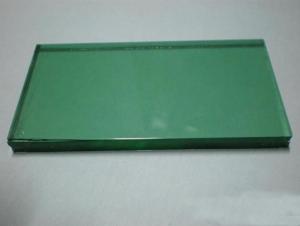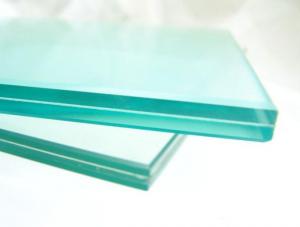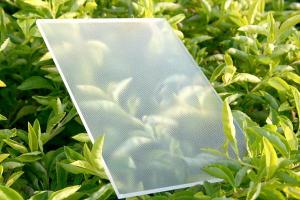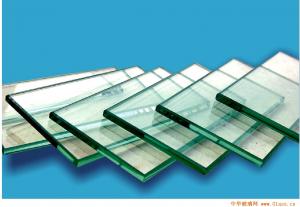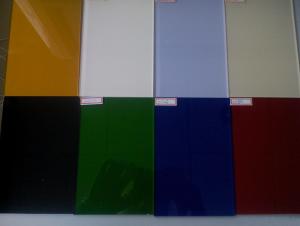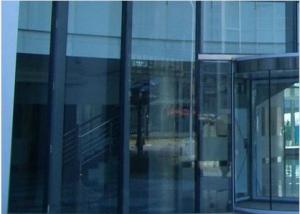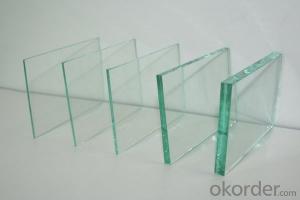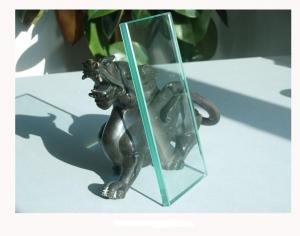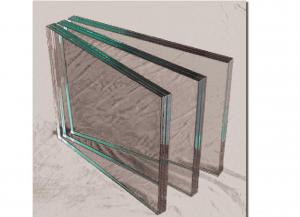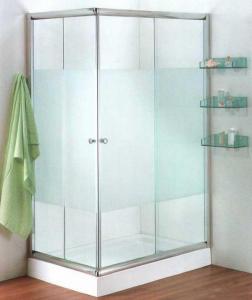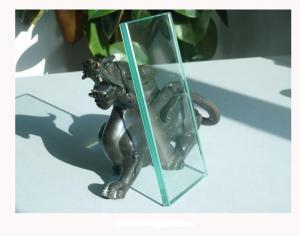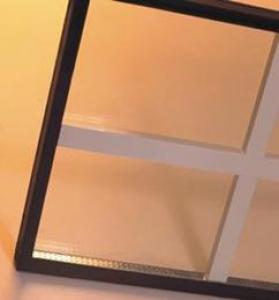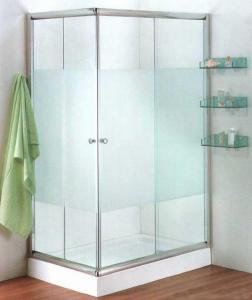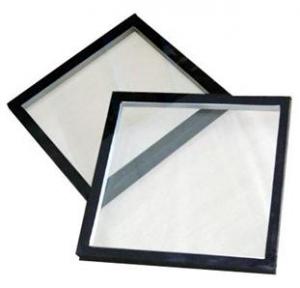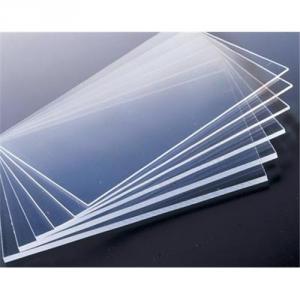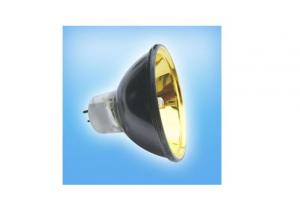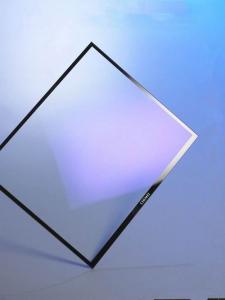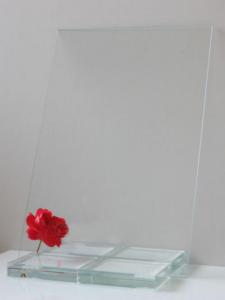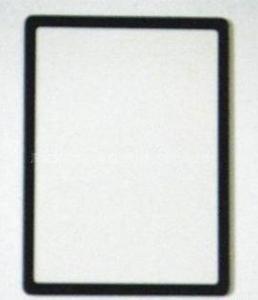Laminated Glass-5
- Loading Port:
- China Main Port
- Payment Terms:
- TT or L/C
- Min Order Qty:
- 100 m²
- Supply Capability:
- 10000 m²/month
OKorder Service Pledge
OKorder Financial Service
You Might Also Like
Laminated Glass is made of high quality float glass, coated glass of various colors, Low-E glass, tempered glass, thermo-strengthening glass and bent/tempered glass. It is a product integrated with two or more glass sheets and one or more layers of organic polymers like PVB, EVA, SGP, etc. It is processed by the tablet machine under high pressure and high temperature, making it unite into one lastingly.
Features:
1. Safety glass
2. Fine light control and heat insulation when using coated glass
3. Sound insulation and noise reduction
4. Good structural feature
5. In order to guarantee the quality of laminated glass, the PVB films are imported from Dupont of the USA or Sekisui of Japan.
6. The colors of the films include clear, milk, blue, dark grey, light green, bronze, etc.
Specifications:
Thickness of Glass: 3mm; 4mm; 5mm; 6mm; 8mm; 10mm; 12mm
Thickness of PVB film: 0.38-3.04mm
Size:
300*300mm
3000*8000mm
customized size
Applications:
Laminated Glass is applied in curtain walls, hotels, banks, airports, sunshades, lighting roofs, windows and gates, sprung roofs, indoor glass partitions, glass furniture, show windows, bars, jewelry shops, elevators and so on.
- Q: What are the main raw materials for making ceramics, glass and cement?
- The main raw materials of cement clinker clinker production [four main raw materials (limestone, sandstone mainly provides Ca (mainly Si), alumina (or slag, mainly to provide Al (or Fe), iron slag, gypsum, slag etc.)]
- Q: I want to ask, if the home is already hollow glass, that still need to foil it?
- Insulating glass insulation effect is very good, but insulation, UV effect is not good. If a glass film is attached to the inner glass, the heat insulation effect is more marked, and the harmful ultraviolet ray can be effectively separated from the 99%, and the glass can be prevented from splashing after breaking.
- Q: What chemicals added to the PVB resin powder can be diluted into a transparent liquid?
- 1) PVB resinPVB intermediate membrane is mainly made of PVB resin..PVB resin is a macromolecule compound obtained by the reaction of polyvinyl alcohol and polyvinyl alcohol under the catalysis of strong acidPVB resin is non-toxic, odorless, non corrosive, non flammable, has good light transmittance, insulation, weather resistance, abrasion resistance, water resistance, oil resistance, aging resistance, adhesive and transparent special properties of inorganic and organic glass. Sandwich materials can be used as safety glass, and can be made transparent other materials used.2) plasticizersPlasticizer 3G8 used in PVB intermediate film has good phase solubility with PVB resin, and has good cold resistance, heat resistance and so on3) additivesIn addition to the above two main raw materials, PVB intermediate membrane, in order to adjust the adhesive force, improve the weather resistance and isolate ultraviolet radiation, also added a relay regulator, antioxidant, UV absorbers and other additives
- Q: Toughened glass and ordinary glass, process and raw materials what is the difference, a little more detailed, thank you
- Toughened glass is the re processed product of ordinary glass.The main components in the glass is silicon dioxide, calcium oxide and sodium oxide, so called silicate glass. There are two ways to make glass toughened. They are physical tempered (air cooled steel) and chemical steel.Tempered glass adopts a chemical tempering method. The principle is the sodium ion with the "head" the larger potassium ions replace the glass surface "head" is small, so that the glass surface is a state, which is the formation of compressive stress, so that the glass has very high impact resistance (increased by about 5 times).
- Q: What material can not be sprayed on the glass?
- If you want to spray characters on the glass, it is impossible to follow the glass unless it is frosted. If you really want to spray words on the glass, you can go directly to the print shop, do the word, and then stick it up.
- Q: Glass fiber reinforced plastic (FRP) is a new type of composite material. What is the raw material?
- Building materials market will be on sale. Glass fiber reinforced plastic (FRP) is a kind of composite material made of glass fiber and one or several thermosetting or thermoplastic resins, such as phenolic resin, epoxy resin, polyester resin, polyimide resin, etc.. Glass fiber reinforced plastic is a new type of composite material developed in early twentieth Century. It has many advantages, such as light weight, high strength, anticorrosion, heat preservation, insulation, sound insulation and so on. The first composite was fiberglass, in fact, it had nothing to do with steel. There is no iron in glass fiber, nor is it a composite of glass and steel.
- Q: What is the raw material of glass fiber reinforced plastics and what is the matching ratio?
- The surface felt contains 90% glue, short cut felt is between 60-70%, square cloth 50., compound felt cloth 55%. Specific depends on the technical level of operators. Hope to be of help to you.
- Q: Tempered glass and ordinary glass raw materials the same, but the manufacturing method is different, why first heating in rapid cooling, the difference is so great?
- When the glass is heated to a suitable temperature, it cools rapidly, causing a sharp contraction of the glass surface and a compressive stress, while the cooling in the middle of the glass is slower and it is too late to shrink, thus forming a tensile stress and making the glass obtain a higher strength. Generally speaking, the higher the cooling intensity, the greater the strength of the glass.
- Q: Why are most of the chemical instruments made from glass?
- Because experiments require high temperatures, heating, freezing, and many complex processes of chemical reactions,
- Q: What are the construction principles and raw materials of tempered glass?
- Tempered glass is the two processing product of flat glass. The processing of toughened glass can be divided into physical toughening method and chemical toughening method. Physical toughened glass is also called tempered tempered glass. It is the ordinary flat glass in heating furnace heated to the softening temperature close to the glass (600 DEG C), the internal stress of the self deformation is eliminated, and then removed from the glass furnace, with long nozzle high pressure cold air blowing glass on both sides, the rapid and uniform cooling to room temperature, well tempered glass can be made. This kind of glass in the internal and external tension compression stress state, once the local damage occurs, the stress release, the glass is broken into small pieces, these small pieces no sharp edges, not easy to hurt. In the production of tempered glass, the most influential factor on the quality of the product is how to make the glass form a larger and uniform internal stress. But the greatest impact on yield is how to prevent cracking and deformation.
1. Manufacturer Overview
| Location | Shenzhen, China |
| Year Established | 1993 |
| Annual Output Value | US$ 10 Million - US$ 50 Million |
| Main Markets | North America; Europe; Australia; Japan; South East Asia; Middle East; Hong Kong; Macao |
| Company Certifications | ISO 9001:2000;ISO14001:2004;OHSAS 18001 system;3C safety Certificate;SGCC (USA);CE (EU);UL (USA) |
2. Manufacturer Certificates
| a) Certification Name | |
| Range | |
| Reference | |
| Validity Period |
3. Manufacturer Capability
| a) Trade Capacity | |
| Nearest Port | Shenzhen |
| Export Percentage | 51% - 60% |
| No.of Employees in Trade Department | |
| Language Spoken: | English; Chinese |
| b) Factory Information | |
| Factory Size: | 50,000-100,000 square meters |
| No. of Production Lines | Above 10 |
| Contract Manufacturing | OEM Service Offered |
| Product Price Range | |
Send your message to us
Laminated Glass-5
- Loading Port:
- China Main Port
- Payment Terms:
- TT or L/C
- Min Order Qty:
- 100 m²
- Supply Capability:
- 10000 m²/month
OKorder Service Pledge
OKorder Financial Service
Similar products
Hot products
Hot Searches
Related keywords
